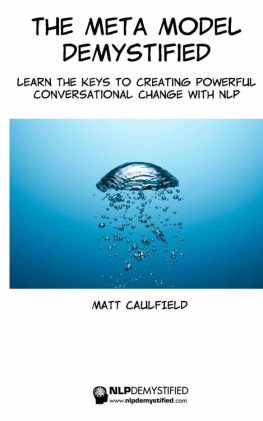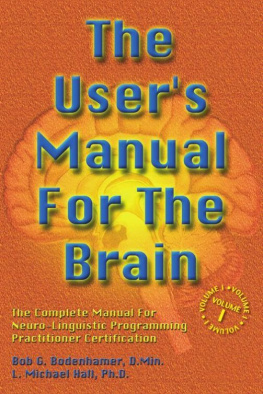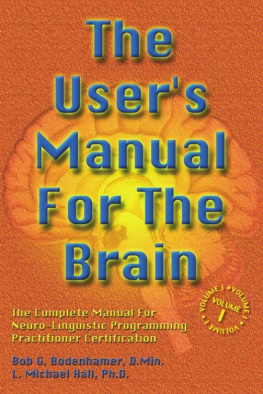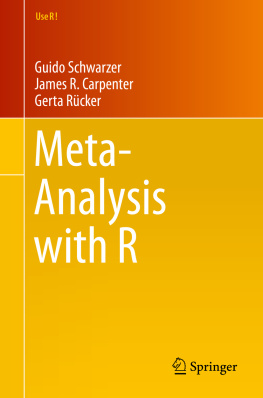MattCaulfield is an internationally recognized coach and trainer. He utilizes NLPand other related tools to help people improve their learning, criticalthinking and communication skills. As he says, In an increasinglycompetitive, fast moving and complicated world, it is the quality of thinkingthat gives the edge. The clearer and better you think, the smarter and fasteryou go.
Tolearn more visit his website www.mattcaulfield.co.ukwhere he writes a regular blog. Its not WHAT you think...
forward TO THE 2ND EDITION:
When I wrote the first edition ofthis book back in 2008, it was an expanded and neatened up version of mytraining notes on the subject, plus excerpts from some blog posts I had writtenon the subject. I realized that the Meta Model, the first and most importantmodel of NLP, had not been presented in an easy to understand and useable way.What was being presented was often outdated, badly copied versions of whatBandler and Grinder were teaching back in the early 1970s. My aim was tosimply present some information, concepts and ideas that I had found useful inunderstanding and updating the Meta Model, and a straightforward way torecognize and use the patterns more successfully. It was a 32 page booklet thatwas meant to be pocket guide, a primer, as it were, not a complete "howto guide.
Since then the overwhelmingfeedback I have received is MORE! I have struggled with how to expand thisguide to fit in all the additional information whilst keeping the ethos ofsimplicity and accessibility.
So, how I have decided to go aboutit is to leave the core information largely unchanged (I edited and reorderedsome of it to add information, create more clarity and clear up some confusion)and created a wrap around of additional information that will hopefullyfulfill the needs and interests of people who want to understand the Meta Modelin greater depth.
I hope I have achieved thatbalance.
In front of the original content Ihave placed a history of the Meta Model and some of the models, principles,concepts and theories that inspired and influenced its creation.
After the original content I haveplaced some additional resources as well as worked examples and detailedbibliography.
The two most common additions Iwas asked for were more sample questions for each pattern and some moreexamples. So I have added two additional sections:
A Meta Model Question Swipe File: A List of the Most CommonQuestions
This is not an exhaustive list, noris it meant to be. It is a starter, a menu, to help you feel comfortable withwhat to ask and when.
Worked Examples
These examples are not transcriptsof client sessions verbatim, but edited, combined and neatened up examples tobest demonstrate the patterns and questions in use.
I have also done my best tocorrect the spelling, grammatical and formatting errors that were missed firsttime round.
On a final note, some feedback Ireceived was that it lacked some detail or precision here and there, so I wouldlike to add that this book assumes a basic and general understanding of NLPbefore you begin. Also, for sake of brevity and ease of reading/use, it makesseveral assumptions and claims without expressly stating the evidence for thatclaim or assumption. This book is not designed to be treatise about TheMeta Model, but a manual about how to put it into action. If I expandedand evidenced all assumptions made this book would grow in size. So removing itis sacrifice I have made in the interest of simplicity.
Structure
This book is split into FiveSections:
The first section is a history of the Meta Model (I say history but much of it hasbeen deduced from information and interviews that the original research grouphave written and given. These accounts vary wildly, so it is very difficult toconclude what is the accurate history of the foundation of NLP).
The second section comprises suggestions and ideas as to how best to use the Meta Model. Theseare some things I have found useful to bear in mind when applying the patterns.
The third section contains helpful hints and tips to consider before being introduced tothe Patterns.
The fourth section describes the patterns themselves. I have presented these in the waysuggested by Richard Bandler. I have included notes and jargon associated withthe original patterns for reference
The fifth section is examples for you to work through.
The sixth section is made up of additional information, hints and tips. This includes alist of Meta Model questions to get you started and a detailed bibliography aswell as the hints and tips.
THE ELECTRICIAN AND THESCREW: A PARABLE
A man owned a widget factory. It wasa very successful widget factory and he was a very successful man. Until, oneday, the whole of the factory suddenly ground to a halt. All the machines juststopped.
The owner called the maintenancedepartment, who could not find the cause of the problem, so in desperation hecalled out an emergency electrician. The emergency electrician wandered aroundthe factory for a little while, poking this and prodding that, before turninghis attention to a small fuse box on the wall. He reached into his toolbox,took out a screwdriver and turned a screw in the fuse box half a turn.
Suddenly everything sprang back tolife. All the machines and conveyor belts started to work again.
The owner was incredibly gratefuland offered to settle the electricians bill immediately. So the electricianhanded over his bill - for $1,000,000. The owner stared at the bill in totaldisbelief. He demanded that the electrician justify the exorbitant bill anditemize it for him. So the electrician wrote out a new receipt, which simplysaid:
Turning the screw $1.00
Knowing Which Screw To Turn$999,999.00
The Meta Model is about learningwhich screw to turn...
PART 1: A BIT OF HISTORY
( Re) Introducingthe Meta Model: The Most Powerful and Important Model in NLP
We all communicate and we all talk toourselves. We think in words. Our thought process is very much a conversationwith ourselves, and what we say (both to ourselves and to other people) affectsour understanding of the world. Therefore better control over what we say givesus better control over our lives.










